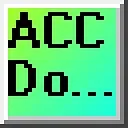0:00
What is the most powerful PLC instruction
0:07
What instruction or concept is the most powerful when programming any manufacturer's PLCs
0:14
Many people will guess timers, counters, or the set and reset bid instructions
0:19
These are all great instructions, but the one that is the most powerful is the indirect
0:23
or pointer instruction. In PLC programming, pointers, also called indirect addressing, store or
0:29
retrieve memory addresses of data or instructions. They are instrumental when dealing with
0:34
large amounts of data or performing complex calculations. Machine recipes, sequence control
0:40
and storage of test results are just a few examples where this powerful PLC instruction is used
0:47
We will examine how indirect addressing works in a click, do more, and productivity PLCs. You will
0:53
discover how easily and powerful pointers are when programming. Let's get started. Detailed information
0:59
about this video can be found at ACCautomation.ca. A link is included in the description below
1:07
The website offers extensive links, references, and coding samples, making it a one-stop shop
1:12
for all your automation queries.acccautomation.ca. Powerful PLC Indirect, Pointer Instruction The pointer instruction will give you flexibility when programming
1:27
Previously, we discussed the five steps to PLC. program development. Using a sequence table is an excellent method to determine the states of each
1:35
input and output in the PLC as we program our machine. The indirect address can take this sequence
1:41
table and program it directly. The inputs are compared to an input table. If equal, the output pointer
1:48
will move the output table value to the physical outputs Pointers are increment and the sequence continues A comparison instruction is used on the last step and if equal the pointers are reset sequencing the machine over again This powerful method
2:03
will involve changing the input and output tables to change the sequence of operations
2:09
Troubleshooting is quickly done because the pointers show you the table value versus the actual
2:13
input values. Once we understand the basic concept of this powerful instruction, we can also
2:19
use it to store values from a test in a series of registers in the PLC. This is especially useful
2:25
when the test is quicker than the corresponding communication method. Stored recipes in the PLC can also
2:31
be utilized to run on a machine. The indirect pointer will load or keep the corresponding recipe
2:36
required in the machine. How many more examples and applications can you think of using indirect
2:42
pointers? Let me know in the comments below. Click PLC Indirect Point
2:49
The Click PLC supports indirect addressing, which the manuals refer to as pointer addressing
2:58
This method utilizes the DS registers as the offset value and can be used with the DS
3:03
DD, DF, D-H-D, XD, YD, T-D, T-TD, and TXT data register memory types. Example
3:12
DD, DS3, this will point to the address in DD that the DS3 value contains
3:18
If DS3 has a 145 value, the address will use DD-145. As we change DS3, DD's corresponding address will also change
3:30
We can copy values to that location, logging, and read values from that location, retrieving
3:36
The corresponding post for this video provides additional examples of indirect pointing
3:41
See the link below. Productivity PLC Indirect Pointer We use arrays to handle indirect addressing in the Productivity Series PLC A tag name can be specified as the index of the array Example Widget progress pointer a 1D array
4:03
Widget progress, pointer underscore row, pointer underscore column, 2D array. Individual elements, values in the array, are addressed by their index
4:13
Coordinates, row, column, the address of the above elements in the array called widget progress is widget progress
4:19
for 2. Format, array name, row, column. Note, the row and column index always begin at 1. The above
4:29
array example was a two-dimensional array. 2D, X and Y, the Productivity Series PLC can also have a
4:36
one-dimensional array. 1D.X. Since we have only one row in this array, we would address the element
4:43
by the column location. In our example, widget progress, 2, would be the location of the element
4:49
highlighted. Format, array name, column. See the links to the website below to discover more about
4:56
the productivity series of PLCs. Do more, BRX, PLC Indirect Pointer. Indirect Addressing allows an
5:07
instruction's memory address to be varied when running to point to multiple locations. All of the
5:12
data blocks in the CPU can be used as arrays. This includes the ones that you can define yourself
5:19
The array index must be in the range of 0 to 65535 and must be stored in the VM memory location
5:26
Example. In this example, we use V0 as the pointer in the array. Its value ranges from 1 to 6
5:35
We are using the instruction move V, V0, to V100. Several examples are shown in the post on the website for this video
5:44
Please see the links below Indirect addressing or pointer instruction is the most powerful instruction in PLC programming It stores or retrieves memory addresses of data or instructions which is extremely useful when dealing with large amounts of data or performing complex calculations
6:01
Pointers provide programming flexibility and can be used for machine recipes, sequence control, and storage of test results
6:09
They can be easily implemented in Click, Do More, and Productivity PLCs
6:13
indirect addressing can take a sequence table and program it directly, comparing inputs to an input table and moving output table values to physical outputs
6:22
This method involves changing input and output tables to change the sequence of operations
6:28
Troubleshooting is made easy because pointers show table values versus actual input values
6:34
Indirect addressing can also be used to store values from a test in a series of registers in the PLC
6:39
and to run stored recipes in a machine. If you enjoyed this video, please hit the like button below
6:55
If you have any questions about this video, please leave a comment below, and I'll do my best to answer them
7:01
If you want more information about us or to get our free e-books on numbering systems or robust data logging
7:06
please click the link below to get it. A new video is released every Monday, so make sure you hit the subscribe button so you can receive more videos like this in the future
7:15
Remember to hit the bell beside your subscription to receive notifications. Thanks so much for watching
7:24
I'll see you next time. Stay safe. You know

